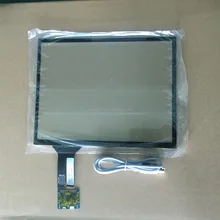Eeti Egalax I2c Programming Manual
Attention, Internet Explorer User Announcement: Jive has discontinued support for Internet Explorer 7 and below. In order to provide the best platform for continued innovation, Jive no longer supports Internet Explorer 7.
Jive will not function with this version of Internet Explorer. Please consider upgrading to a more recent version of Internet Explorer, or trying another browser such as Firefox, Safari, or Google Chrome. (Please remember to honor your company's IT policies before installing new software!) • • • •.
This page is a documentation of my dealings with various touchscreen devices I've encountered. In my experience, most modern devices work out of the box with both 10.04 LTS or 12.04 LTS, but lack the proper calibration or configuration. Some older devices, especially those embedded in laptops such as GD Itronix line of rugged computers, use serial interfaces which lack the configuration to work in Linux. The methods documented here should work with other distros as well.
* driver for eeti egalax multiple touch controller * * to eeti egalax i2c programming manual. Installing the egalax touchscreen help. Finale Notepad 2008 Mac Free Download. * This program is free software. /* EETI eGalax serial touch screen controller is a I2C based multiple. Static struct i2c_driver egalax_ts_driver = {.

Global Dynamics Itronix GoBook XR-1 This is a rugged laptop I picked up from ebay for a good price, which the seller wiped with Ubuntu 10.04 due to the expense of Microsoft's Windows relicensing fee. The device has an integrated serial touchscreen, and the manufacturer is notorious for hiding any and all documentation on legacy devices such as this one. With a little trial and error however, it's relatively simple to configure this and similar devices.
This method should work for most GD products, including the newer GD8000 which replaced this device. Skip to the section for configuring serial devices for these machines. Checking for touchscreen connectivity When encountering a new device, the first order of business is to determine how the touchscreen is connected to your computer. If the touchscreen produces no events out of the box, check to see if it's an USB device or not: lsusb USB connection Check the output for any reference to a touchscreen. If your touchscreen has an USB interface, and it isn't working, then you may need to blacklist the usbtouchscreen driver for it to work: sudo modprobe -r usbtouchscreen If your touchscreen begins to produce events, then you can permanently blacklist the usbtouchscreen driver: echo 'blacklist usbtouchscreen' sudo tee -a /etc/modprobe.d/blacklist.conf Some touchscreens might already have good or perfect calibrations, otherwise you'll need to continue to the calibration section.
Serial connection If there is no reference to a touchscreen device in your lsusb output, the connection is most likely through one of your serial ports. The actual IRQ mapping varies between manufacturers. In the case of Itronix devices, the default is /dev/ttyS3. A simple way to check for connections is to check each one for events: screen /dev/ttyS0 Touch anywhere on your screen to check for any character output. Free Download Apm6852 Fridge Freezer Manual Programs To Help. If nothing happens, quit screen by pressing Ctrl+A and then the ' ' key to quit.
Continue with /dev/ttyS1, etc. Until you get a response.
Once you've determined the device, we can try a few different drivers. In the case of Itronix (and most other devices using the Touchkit driver), the correct driver is touchit213. Sudo inputattach --touchit213 /dev/ttyS3 Will work for most touchkit screens. The calibration or one or more axes may be swapped, but if the calibration is approximate then it's probably the correct driver.
Press Ctrl+C to try a new mode. # /etc/modules: kernel modules to load at boot time. # # This file contains the names of kernel modules that should be loaded # at boot time, one per line. Lines beginning with '#' are ignored. Loop lp usbtouchscreen usbhid rtc ===================== Load the Kernel Modules (only the 1st time) Then load the modules by hand the 1st time (or reboot) sudo modprobe usbtouchscreen usbhid Move the Daemon and Calibration Files Move al the files in the folder /home/user/Downloads/eGalax/eGTouch_v2.5.4330.L-x/eGTouch64/eGTouch64withX to /usr/local/bin/ *Note the following command is one line sudo rsync -avz /home/$USER/Downloads/eGalax/eGTouch_v2.5.4330.L-x/eGTouch64/eGTouch64withX /usr/local/bin/ Place Upstart Job place the following Upstart job in /etc/init /etc/init/egalaxtouch.conf.